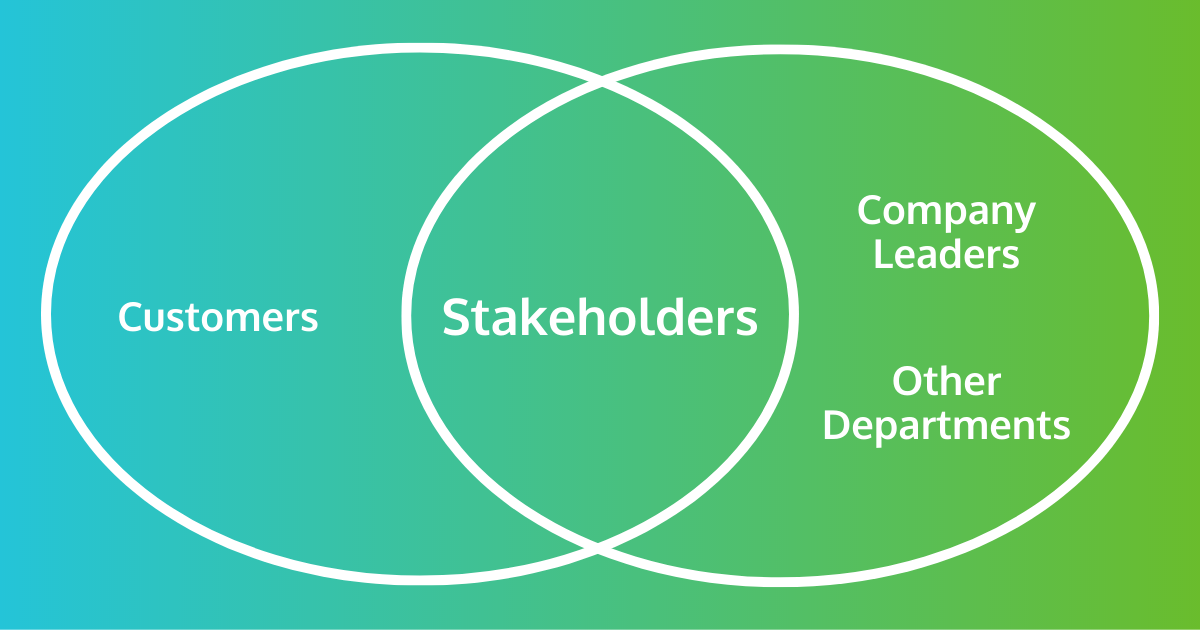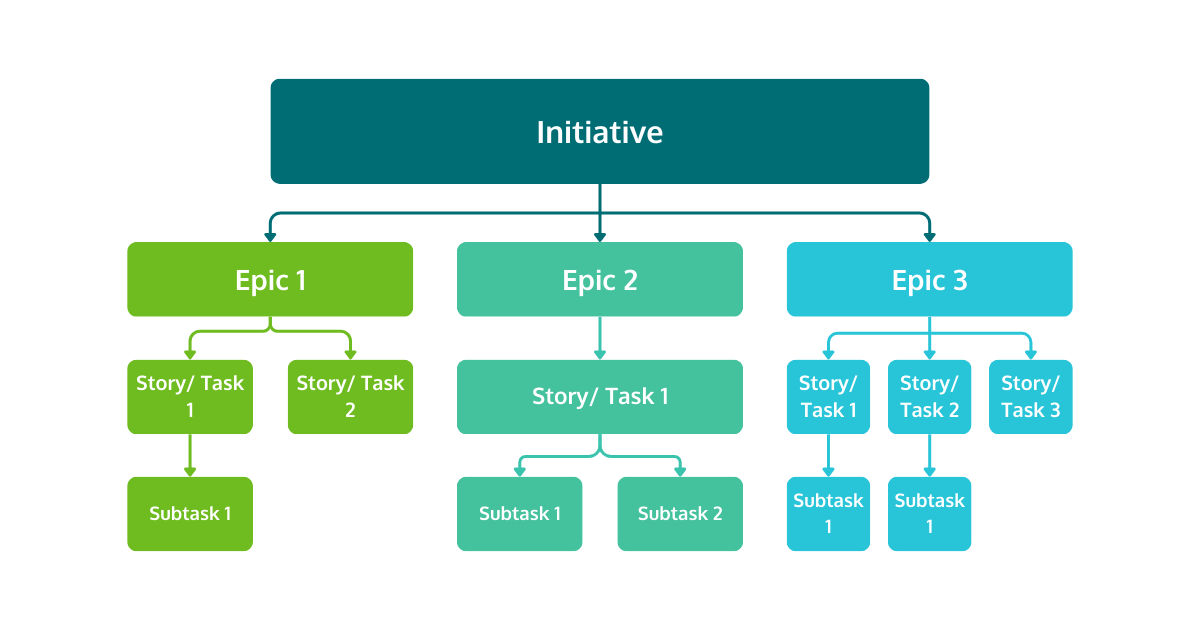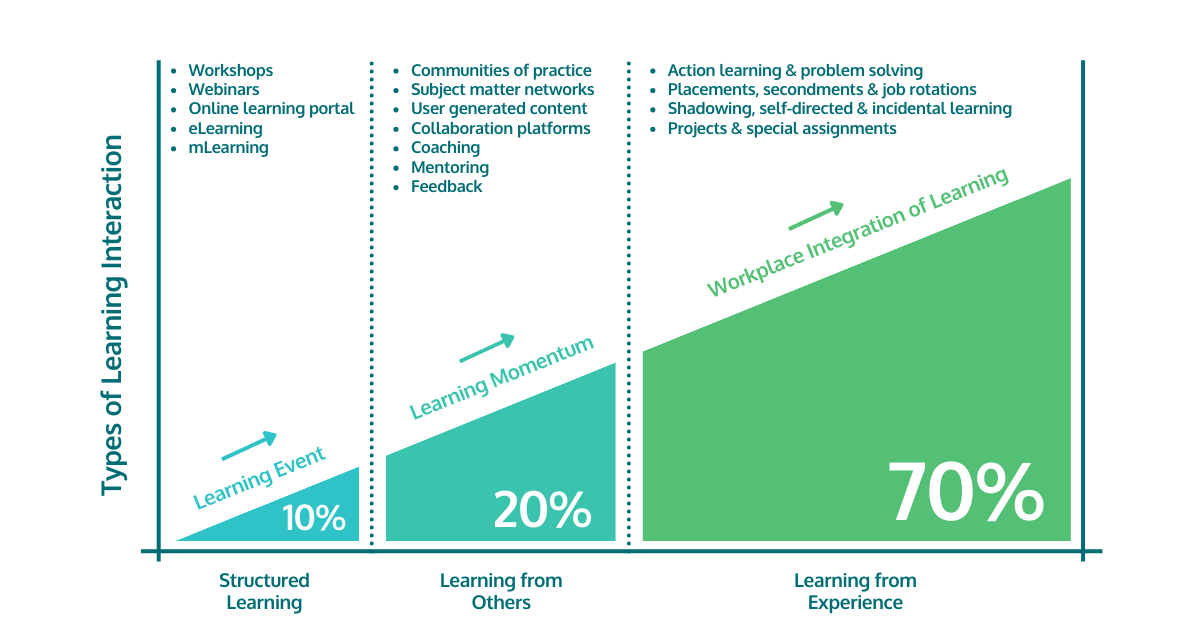-
- marketing agility
- Teams
- Organizations
- Education
- enterprise
- Articles
- Individuals
- Transformation
- Solution
- Leadership
- Getting Started
- business agility
- agile management
- going agile
- Frameworks
- agile mindset
- Agile Marketing Tools
- agile marketing journey
- organizational alignment
- Agile Marketers
- People
- Selection
- (Featured Posts)
- strategy
- agile journey
- Metrics and Data
- Kanban
- Resources
- Why Agile Marketing
- agile project management
- self-managing team
- Meetings
- Scrum
- agile adoption
- scaled agile marketing
- tactics
- scaled agile
- AI
- Agile Meetings
- agile marketing training
- agile takeaways
- Agile Leadership
- agile coach
- enterprise marketing agility
- Scrumban
- state of agile marketing
- team empowerment
- Intermediate
- agile marketing mindset
- agile marketing planning
- agile plan
- Individual
- Team
- Videos
- agile marketing
- kanban board
- Agile Marketing Terms
- agile transformation
- traditional marketing
- FAQ
- agile teams
- Agile Marketing Glossary
- CoE
- Scrumban
- agile
- agile marketer
- agile marketing case study
- agile marketing coaching
- agile marketing leaders
- agile marketing methodologies
- agile marketing metrics
- agile pilot
- agile sales
- agile team
- agile work breakdown
- cycle time
- employee satisfaction
- marketing value stream
- marketing-analytics
- remote teams
- sprints
- throughput
- work breakdown structure
- News
- agile brand
- agile marketing books
- agile marketing pilot
- agile marketing transformation
- agile review process
- agile team charter
- cost of delay
- hybrid framework
- pdca
- remote working
- scrum master
- stable agile teams
- stand ups
- startups
- team charter
- team morale
- user story
- value stream mapping
- visual workflow

No matter how good we are, we always encounter our fair share of marketing challenges.
Actually, it’s usually more than a “fair share," if we're being totally honest.
Whether it’s fighting with stakeholders over prioritization or watching our processes atrophy because nobody wants to spend the time and resources to take care of them, the result is often frustration and burnout.
But it doesn’t have to be this way. Agile ways of working provide reliable solutions to a long list of common marketing challenges that hold us all back. So instead of letting your frustration build and looking for a new job (where you might just encounter the same problems), try some of these techniques and see if they will move the needle for you.
Marketing Challenge #1: I Don’t See Results
This is perhaps the most common and most frustrating marketing challenge out there. You keep trying new strategies, putting in longer hours, and getting better tools, but you just don’t see the results you want. While the exact problems can vary, getting back to the core elements of effective marketing can go a long way toward fixing this issue.

It starts with focusing on your stakeholders. If what you’re producing isn’t viewed as valuable by your stakeholders then your work just isn’t going to be relevant. Once you’ve got a clear idea of what your goals should be based on what your stakeholders need, you can begin using some of the optimization processes we’re going to mention in the remaining points.
Marketing Challenge #2: External Contributors Create Delays
Working with external contributors like designers, editors, or even writers is common today. What’s just as common is the frustration that comes with those people not being communicative, doing their work on time, or delivering what’s expected of them.
The answer is Service Level Agreements (SLAs). These simple contracts lay out exactly how the relationship between a marketing team and an external contributor should function. This can include availability, how quickly work should be completed, what’s expected from that work, etc.
Beyond simply getting these expectations in writing, SLAs help create a shared understanding of expectations. This is key for creating a productive and pleasant relationship. Just be sure not to present your terms as a fait accompli, SLAs should come from a conversation about what’s reasonable and how the two parties can best work together to create great work.
Marketing Challenge #3: Time Is Wasted Waiting for Information
While this marketing challenge has always existed, in today’s remote work era it’s particularly problematic. Sometimes, waiting for a colleague on the other side of the planet to share something as simple as a URL with you can delay work by a full day.
Having to explain to your manager that work wasn’t done on time because of a simple communication issue is never fun.
That’s why Agile visualization tools are so useful. Besides all their other benefits like making priorities clear and allowing everyone to easily see what’s happening, they provide a single place to include all the key information a work item needs. By associating work items with cards, it becomes easier to keep track of all the URLs, random ideas, and assets connected to that work.

Marketing Challenge #4: Unsure Know What to Prioritize
As marketing challenges gets more complex, with more and more stakeholders, channels, and activities, prioritizing all the work we do gets even harder. The first step to improving how you prioritize is to use the focus on stakeholder value we mentioned earlier.
Once you have a clear idea of the value you should be producing, comparing apples and oranges (metaphorically) gets easier because you can focus on asking which will provide more of the value your stakeholders want. This gets everyone involved asking the right questions and considering the same variables.
But the flip side of prioritization is estimation. Knowing how much value two work items will create is useless if you have no idea how much work they will require. The good news is that there are proven (yes, by actual researchers) ways to reliably estimate how much time work will take. Considering how terrible we humans are at this, planning poker is a real godsend.
Marketing Challenge #5: Leaders Don’t See the Value of Marketing
There’s nothing more disheartening as a marketer than feeling like you did a fantastic job only to see company leaders react with a shrug. Even if your marketing is bringing tremendous value, if your leaders don’t recognize that value then you’re not going to get the resources and support you need to maintain that progress.
Again, the focus on stakeholder value helps here, but it’s not always enough. Another strategy is to use a visualization tool to tie your work directly to company initiatives. You can see what this looks like in practice here:

This is born out in the data, as 54% of marketing functions where all teams use Agile report that it’s easier for them to connect their daily activities to corporate strategy and objectives. This is also aided by ensuring your marketing objectives themselves are crafted well, but we’ll talk about that more under marketing challenge number seven.
Before moving on to the next challenge, why don't you take a second to grab our Agile Marketing Quick Start Guide?
Marketing Challenge #6: Marketing Isn’t Changing or Adapting
It’s a fundamental fact of marketing, business, and life for that matter: no process works forever. Whether you’re talking about farming potatoes, keeping in touch with family, or managing a $200 million dollar marketing strategy, you wouldn’t want to even consider doing things the way they were done 30 years ago.
To be successful and remain so over the long-run, you need a system for regularly evaluating your processes and finding ways to improve them. This helps ensure problems are tackled with regularity instead of being allowed to fester until they become crises.
Instead, by holding regular retrospective meetings in which your teams talk about what went well, what didn’t, and brainstorm ideas for improvement, marketing can ensure it shifts to a culture of continuous improvement. As a result, you can tackle marketing challenges before they fester and become more serious problems.
An added benefit of this approach is the feeling of psychological safety that’s created when team members feel their concerns are heard. The result is an environment where people feel comfortable experimenting and suggesting improvements, enabling marketing to harness the full potential of its members and their ideas.
Marketing Challenge #7: Our Goals Don’t Feel Relevant
We mentioned earlier how sometimes even achieving the goals you set out can feel totally irrelevant. Or, you may not even be totally clear on what your goals are. This usually stems from bad marketing objectives. Improving them begins with ensuring they’re SMART:
- Specific (what needs to happen, who will do it, etc.)
- Measurable (how will success be quantified?)
- Achievable (is this realistic within the time frame?)
- Relevant (is this tied to broader goals?)
- Time-Bound (what does the timeframe look like for the objective and its steps?)
Then, at the risk of getting too repetitive, those objectives need to be directly tied to broader organizational goals. Otherwise, you may as well be building a supporting column for a house… in a different town.
Afterward, you need to ensure you’re choosing the right metrics to achieve those goals. Cap it all off with those retrospectives to check back in and ensure your changes are leading to results and you’ve got a system for consistently better marketing objectives. Better marketing objectives then make it easier to address other marketing challenges as well.
Marketing Challenge #8: Budgets Are Shrinking But Not Expectations
It’s a tough reality we all need to deal with: marketing budgets are shrinking. However, that rarely means what leaders expect from marketing is going to change at all. For most of us, figuring out how to do more with less has become a daily marketing challenge we need to reckon with.
This is where techniques like limiting your work in progress (WIP) can have a major impact. You can’t magically turn one dollar into two, but you can increase the amount of work you’re able to do by limiting the amount you do at any given time. Despite how much people love to brag about their ability to multitask, we’re all terrible at it.
Context switching has a staggering impact on our ability to get things done.
By imposing a hard limit on the number of tasks you have in progress at once, you can improve how quickly, efficiently, and effectively you’re able to do those tasks. For overstretched marketing functions, this means doing more with less without placing an undue burden on everyone’s time and mental health.
So instead of just trying to work harder to squeeze more out of that budget, try working smarter by focusing on what really matters.
Marketing Challenge #9: Unsure When to Pivot or Try New Things
Inertia is a powerful thing. Plenty of marketing departments can rely on processes everyone knows are ineffective for years just because there’s never a good time to address them. On the flip side marketing departments can get whiplash when leaders decide to make sweeping changes seemingly on a whim.
Both extremes can sap morale and make marketing less effective. The key is finding a balance.
Teams need to regularly review their processes and work, highlight problems, propose solutions, and test those solutions. But all of this needs to happen with a predictable cadence, both to ensure problems aren’t allowed to fester for too long and that changes don’t appear out of the blue.
Ideally, this will happen by breaking work up into sprints that last a few weeks. You may do this by adopting the Scrum framework or trying something more ad hoc. Either way, ending each sprint with a retrospective meeting where you consider whether your processes or the work itself need major changes is a helpful way to create that regular cadence.
Marketing Challenge #10: Our Tools Aren’t Cutting It
Ask any marketer to do their job without their preferred tools and you’ll quickly see a very frustrated marketer. In today’s digital-first environment, the tools we use are absolutely essential and not having access to the right ones can be crippling. Managing work in spreadsheets and not using professional SEO tools can only get you so far.
But what’s the Agile solution to not having the right tools?
Much like how Agile teams tackle capacity issues, it’s all about allocating resources where they will have the greatest impact. Use the framing of generating the most value for stakeholders and compare the cost and benefits of each of your tools at the same time. By comparing in this way, you can more easily identify tools that, while useful, may not justify their cost.
Taking this holistic view enables you to allocate a limited budget more effectively and hopefully spot tools you might still be paying for despite not using them. If you’re still left feeling you don’t have what you need, the “value for stakeholders” framework can be used to make the argument for more resources to those stakeholders.
Marketing Challenge #11: Too Much Time Is Wasted in Meetings
This is a marketing challenge far too many of us can relate to. When you account for the combined time wasted, not to mention the frustration, unnecessary meetings can be shockingly wasteful.
That said, meetings still play an important role. That’s why the Agile approach to this marketing challenge is all about minimizing the number of meetings and maximizing their impact. Like with many of the tips on this list, the first step is to provide the “value to stakeholders” lens. Teams should ask themselves whether their meetings are actually generating value and if not, get rid of them.
One useful question to ask is whether these meetings can be replaced with asynchronous communication via tools. This is particularly useful when people are working remotely from different time zones.
But besides looking at what you’re already doing, there are a few common types of Agile meetings that can be useful. The first is the daily standup. This is a short (ideally less than 15 minutes long) daily meeting in which team members state what they’re working on and flag any challenges they might be having. The idea is that team members get visibility for what’s going on and can quickly step in to help when someone is stuck.
As mentioned above, retrospective meetings are an efficient way to run through what went well, what can be improved, and how the team can address those problems every few weeks. These kinds of regular meetings with focused agendas can help cut down on the kind of rambling ad hoc meetings that drive most marketers crazy.
If you’re curious to explore a bit more, check out our in-depth article on Agile roles and meetings for more insights on how to tackle this challenge.
Marketing Challenge #12: Marketers Aren’t Developing Their Skills
With the pace at which marketing evolves, there’s never been a greater need for upskilling to ensure team members remain able to tackle all the marketing challenges on this list and more. But doing so effectively requires the right mixture of theoretical and practical knowledge driven by courses, coaching, and practice.
One way to approach this is through the 70-20-10 principle, devoting 10% of your time to courses, 20% to learning from others through things like coaching, and the remaining 70% to practically implementing all of this knowledge.

The common practice today is often just getting marketers to take a class or watch a video before assuming this now means they have acquired a new skill or understand a concept. By contrast, this balanced approach helps ensure real knowledge is generated and marketers end up with an understanding of how to apply that knowledge to their circumstances.
That last part is crucial, as marketing evolves faster than ever and marketers need to be ready to adapt concepts and practices to those changing situations. Taking a one-size-fits-all approach is just going to leave you with team members who understand something in theory but are unequipped to put things into practice.
Equip Your Marketers to Tackle Their Toughest Challenges
If you’re looking for an easy and affordable way to get your marketers access to a wide array of content designed to help them tackle the challenges on this list, we have just the thing. Our Carabiner mini-lessons can be completed in around a half hour and include videos, exercises, and reflection activities all built around our experiences helping marketing functions improve how they deliver value.
By using courses that can be completed in around a half hour, it’s easy to fit them into busy schedules and return to them when team members need a refresher.
Before you go, why don't you take a second to have a look at our Agile Marketing Quick Start Guide?
Topics discussed
Improve your Marketing Ops every week
Subscribe to our blog to get insights sent directly to your inbox.



